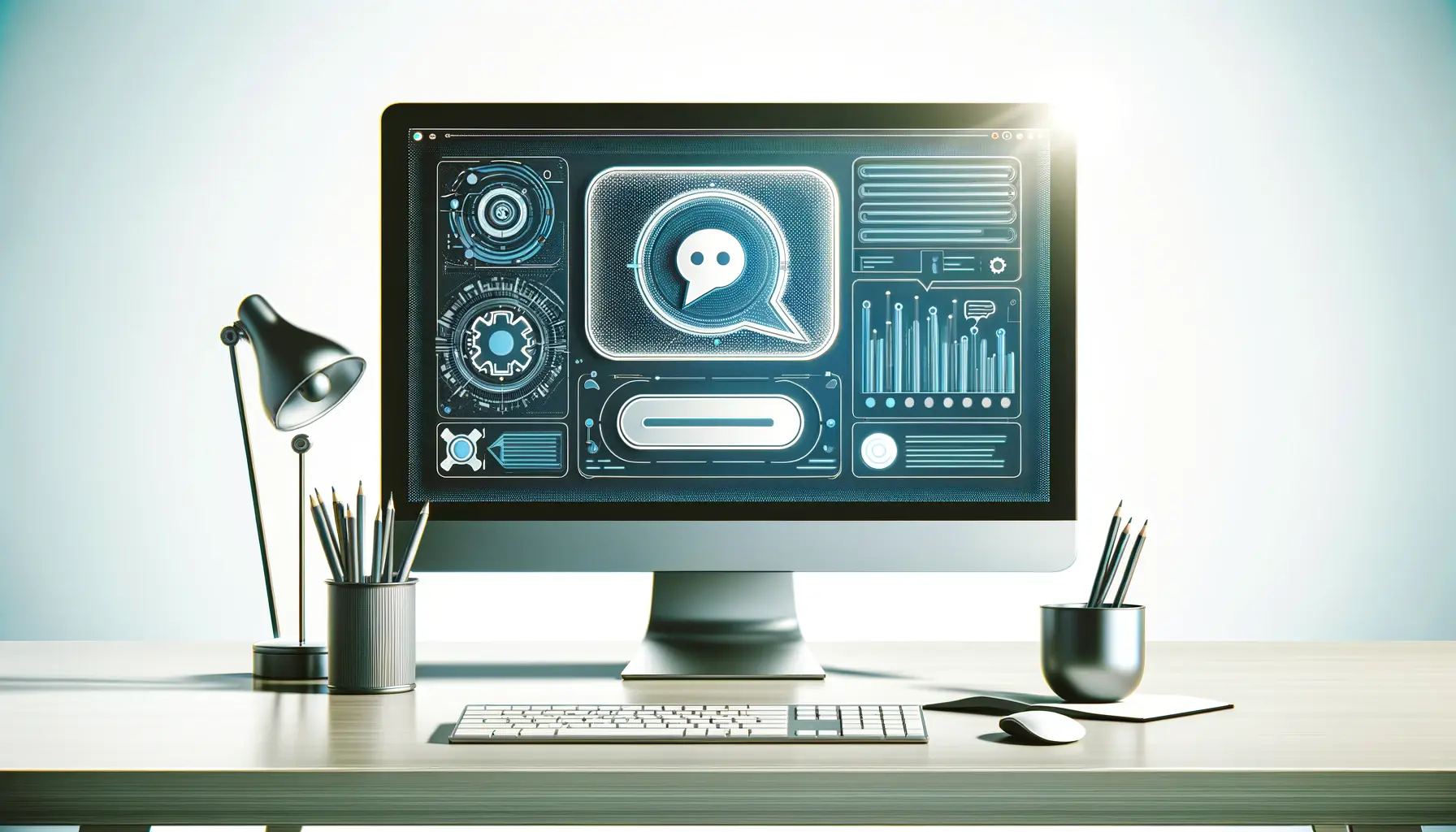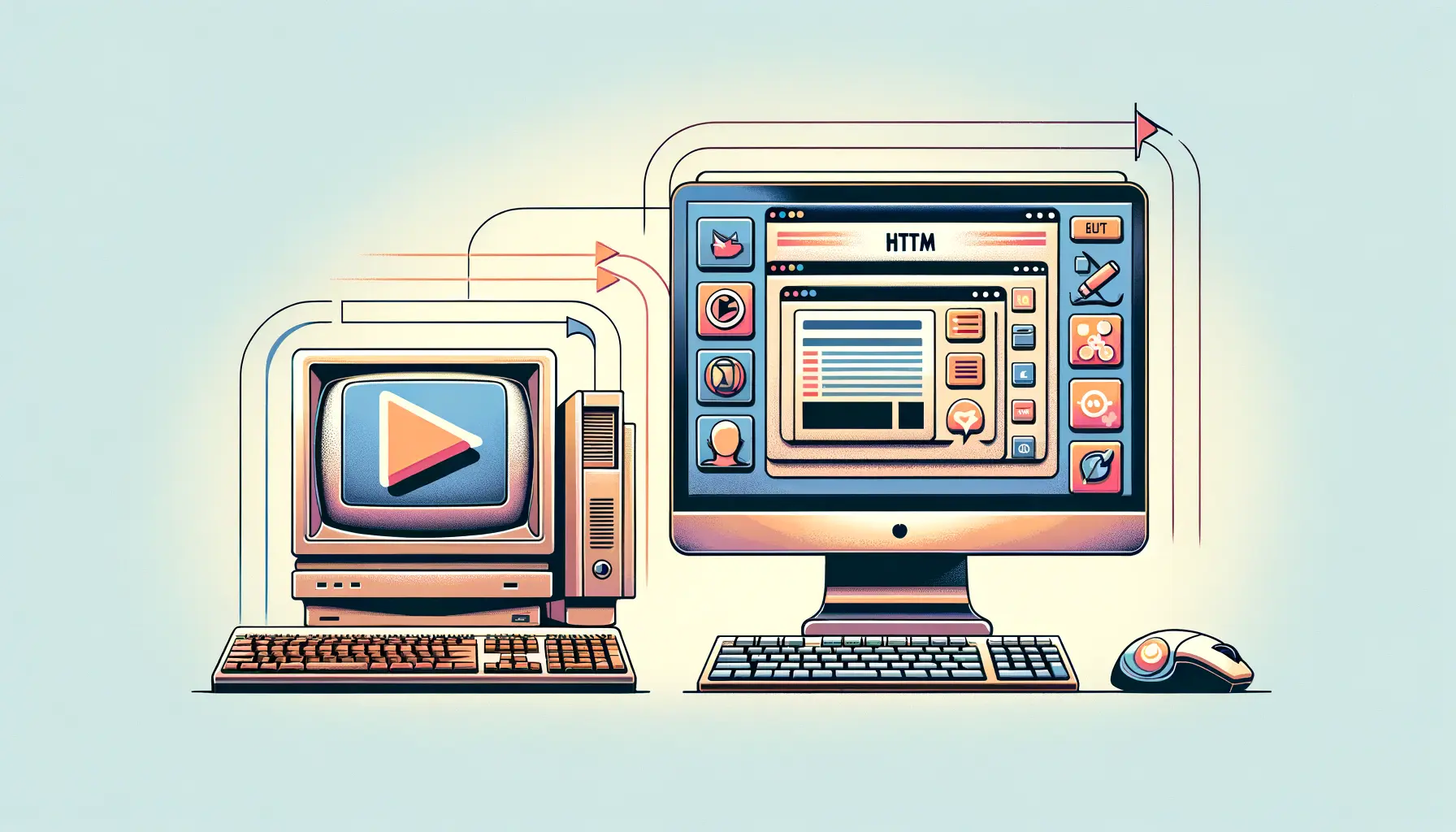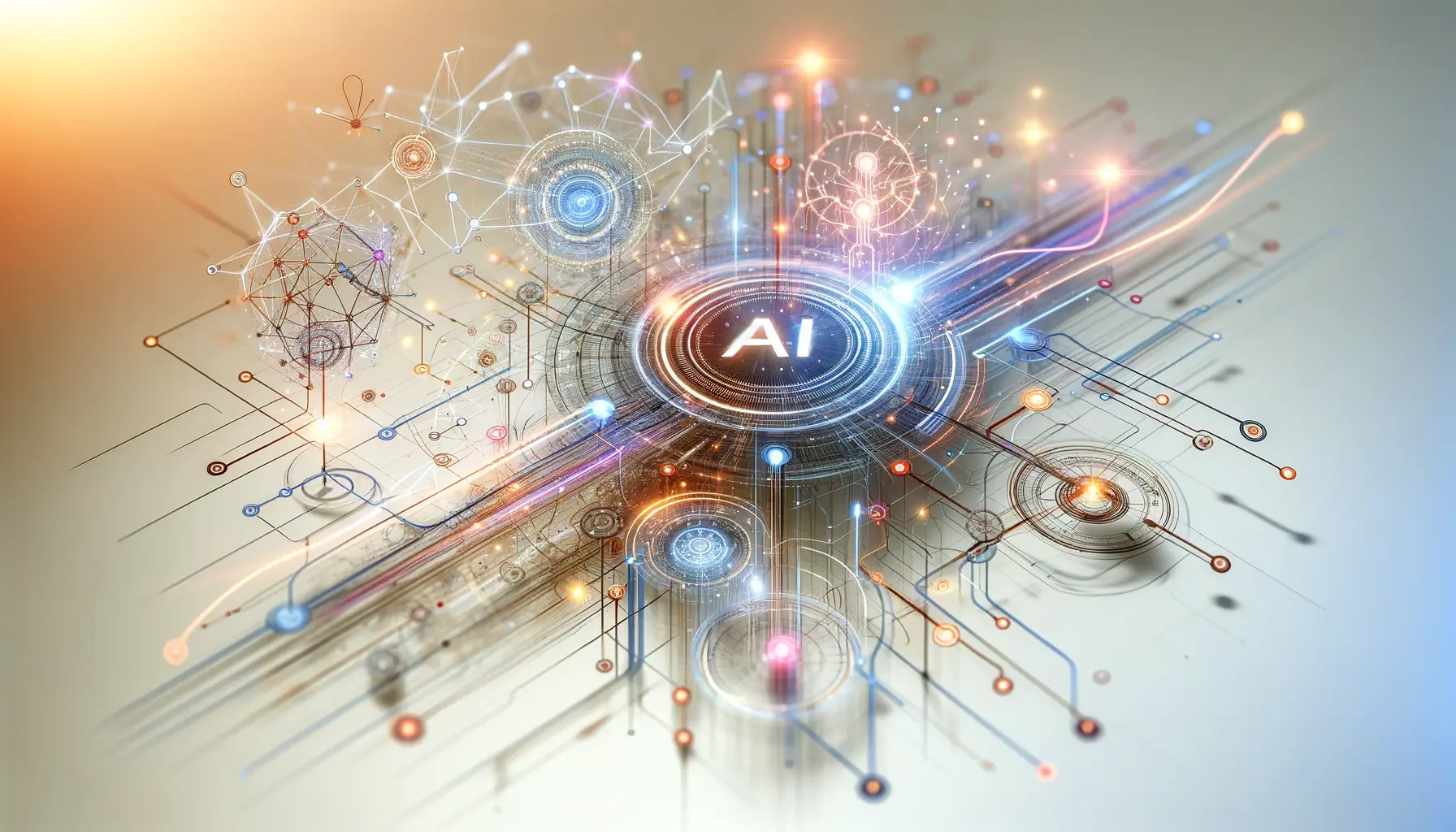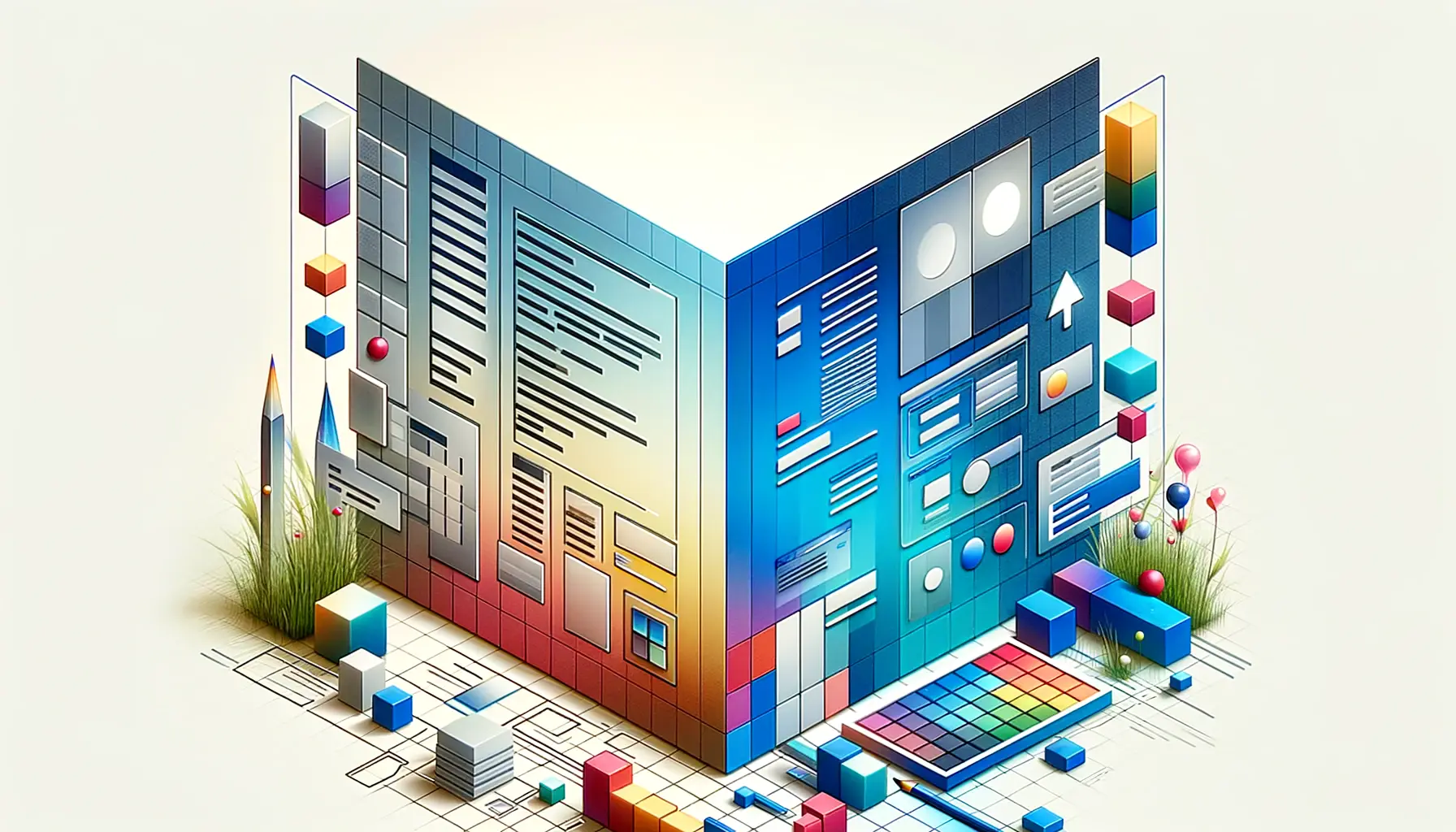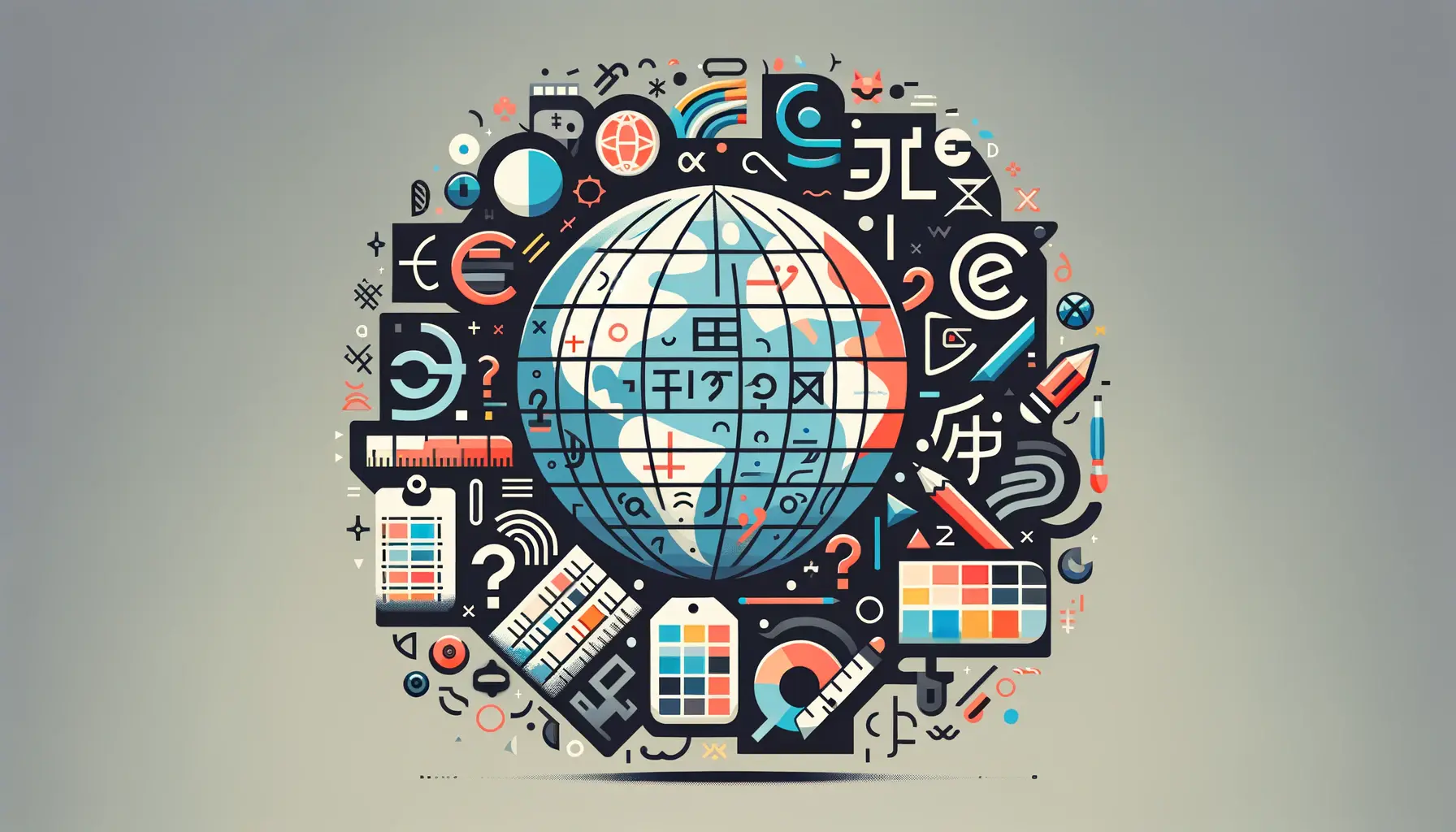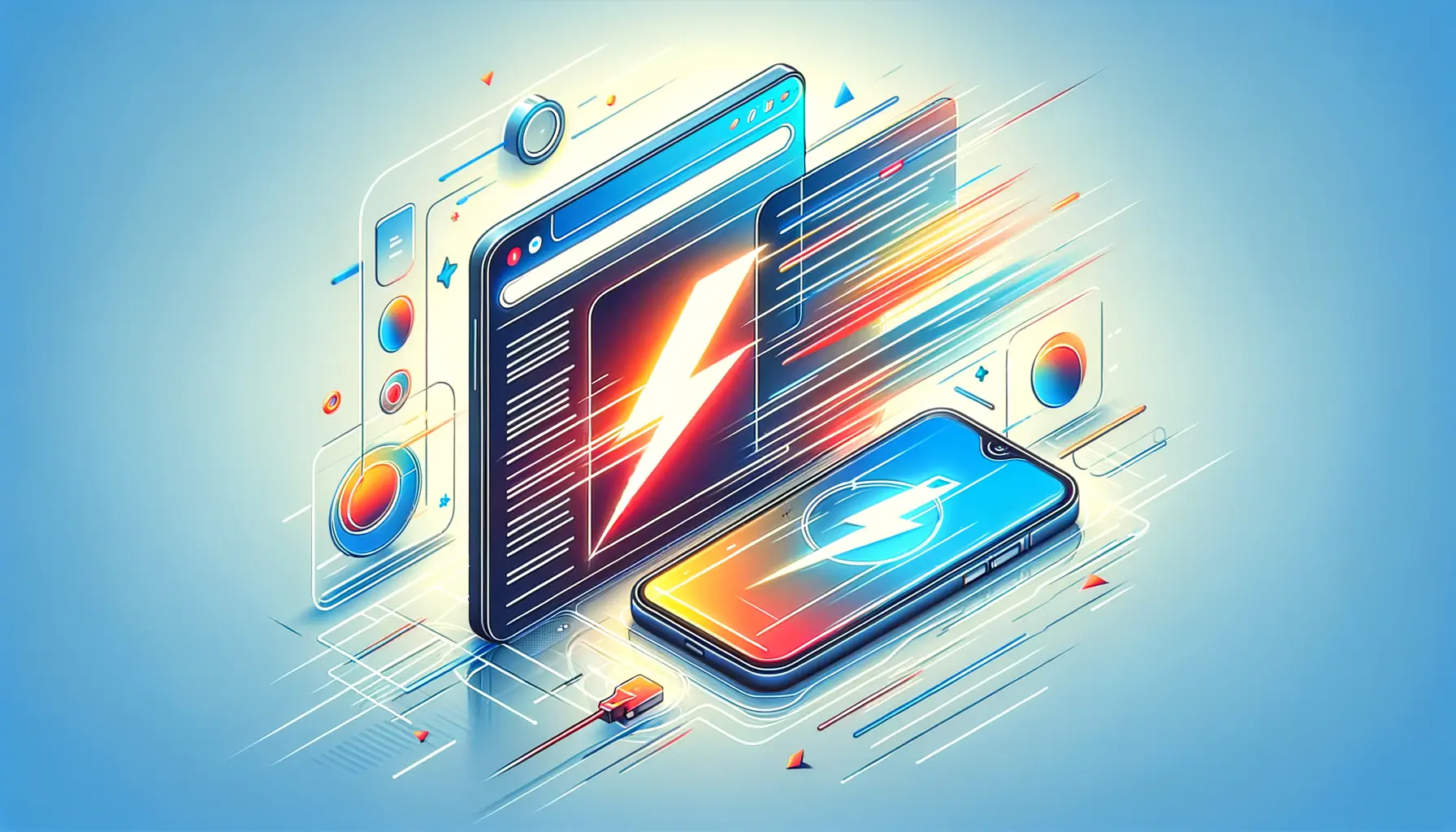The integration of Artificial Intelligence (AI) into web design, particularly through the use of JavaScript, marks a transformative era in digital interaction.
This fusion not only enhances user experience but also propels the capabilities of websites to new heights.
As AI continues to evolve, its application within web design, especially in the form of chatbots, has become increasingly significant.
This article delves into the intricate relationship between JavaScript and AI, focusing on the integration of chatbots in web design, a trend that is reshaping the way users interact with digital platforms.
Chatbots, powered by AI algorithms, are becoming an indispensable tool for providing immediate, 24/7 assistance to website visitors.
JavaScript, with its versatility and wide adoption, serves as the perfect conduit for embedding these intelligent chatbots into web pages.
The synergy between JavaScript and AI not only enhances the functionality of websites but also offers a more engaging and personalized experience for users.
By exploring this integration, developers and designers can unlock new potentials in web design, making websites more interactive, responsive, and user-friendly.
- Understanding the Basics of AI Chatbots in Web Design
- Key Technologies Behind AI Chatbots
- Designing and Developing AI Chatbots
- Challenges in Integrating AI Chatbots
- Best Practices for Chatbot Integration
- Future Trends in AI Chatbots and Web Design
- Integrating Chatbots with Web Development Tools
- Empowering Web Design with AI Chatbots: A New Era of Interaction
- FAQs on Integrating Chatbots in Web Design
Understanding the Basics of AI Chatbots in Web Design
At the core of integrating AI chatbots into web design is the goal of improving user engagement and automating customer service tasks.
AI chatbots are designed to simulate conversations with users, providing them with information, assistance, and even entertainment.
These chatbots are capable of learning from interactions, improving their responses over time, and providing a more natural conversation experience.
JavaScript plays a crucial role in this integration, acting as the bridge between the chatbot’s AI and the website’s frontend.
The development of AI chatbots involves several key technologies, including natural language processing (NLP), machine learning, and AI frameworks.
These technologies allow chatbots to understand user queries, process them, and generate appropriate responses.
JavaScript frameworks and libraries, such as Node.js and TensorFlow.js, are instrumental in implementing these AI capabilities within web applications.
By leveraging these tools, developers can create chatbots that not only understand and respond to user input but also adapt and learn from each interaction.
Benefits of Integrating AI Chatbots
Integrating AI chatbots into websites offers numerous benefits.
Firstly, they provide instant support to users, answering queries and resolving issues around the clock.
This level of customer service can significantly enhance user satisfaction and loyalty.
Secondly, AI chatbots can handle multiple interactions simultaneously, reducing the need for human customer service representatives and thereby cutting costs.
Additionally, chatbots can collect valuable data from interactions, providing insights into user behavior and preferences.
Another advantage is the personalization aspect.
AI chatbots can tailor their responses based on the user’s previous interactions, preferences, and behavior on the site.
This personalized approach can make the user experience more engaging and enjoyable, encouraging users to spend more time on the site.
Furthermore, chatbots can guide users through the website, helping them find the information they need or complete actions, such as making a purchase or booking an appointment.
The integration of AI chatbots into web design, facilitated by JavaScript, is revolutionizing the way websites interact with users, offering benefits such as 24/7 customer support, cost reduction, valuable insights into user behavior, and enhanced personalization.
Key Technologies Behind AI Chatbots
The development and integration of AI chatbots into web design rely on a combination of advanced technologies.
Understanding these technologies is crucial for developers looking to implement AI chatbots effectively.
At the heart of these chatbots are Natural Language Processing (NLP), Machine Learning (ML), and various JavaScript frameworks and libraries that facilitate the seamless integration of AI capabilities into web applications.
Natural Language Processing (NLP)
Natural Language Processing stands as the cornerstone technology that enables chatbots to interpret and understand human language.
NLP combines computational linguistics—rule-based modeling of human language—with statistical, machine learning, and deep learning models.
This allows chatbots to process and analyze large amounts of natural language data, understanding user intents and generating responses that mimic human conversation.
JavaScript, through libraries such as Natural, provides developers with NLP capabilities directly within web applications.
This integration is essential for creating chatbots that can engage in meaningful conversations with users, understand their queries, and provide relevant responses.
Machine Learning (ML)
Machine Learning is another pivotal technology that enhances the functionality of AI chatbots.
ML algorithms enable chatbots to learn from data, identify patterns, and make decisions with minimal human intervention.
This learning capability is crucial for improving the accuracy of chatbot responses over time, as it allows the chatbot to adapt based on user interactions.
Frameworks like TensorFlow.js allow for the implementation of ML models in JavaScript, enabling web-based chatbots to leverage deep learning technologies.
This integration facilitates the creation of more intelligent and responsive chatbots that can provide personalized experiences to users.
JavaScript Frameworks and Libraries
- Node.js: A JavaScript runtime built on Chrome’s V8 JavaScript engine, Node.js facilitates the development of fast and scalable network applications. It’s particularly useful for creating the server-side component of chatbots, handling requests, and integrating with AI and ML models.
- TensorFlow.js: An open-source library for machine learning in JavaScript, TensorFlow.js enables the training and deployment of ML models directly in the browser or on Node.js. It’s instrumental in incorporating ML capabilities into chatbots, allowing for real-time learning and adaptation.
- Socket.IO: This JavaScript library enables real-time, bidirectional, and event-based communication between web clients and servers. It’s crucial for developing chatbots that require real-time interaction with users, facilitating instant messaging and response generation.
Leveraging these technologies, developers can create AI chatbots that are not only capable of understanding and processing human language but also learning from interactions to provide more accurate and personalized responses over time.
Designing and Developing AI Chatbots
The process of designing and developing AI chatbots involves several critical steps, from understanding user needs to choosing the right technologies and frameworks.
A well-designed chatbot should not only be able to understand and respond to user queries but also offer a seamless and engaging user experience.
This section outlines the key stages in the development of AI chatbots, emphasizing the role of JavaScript and AI technologies.
Understanding User Requirements
Before diving into the technical development, it’s essential to understand the needs and expectations of your users.
This involves identifying the primary functions the chatbot will serve, such as customer support, information retrieval, or transaction processing.
Understanding user requirements helps in designing a chatbot that provides value and enhances the user experience on your website.
Conducting surveys, analyzing customer support queries, and studying user behavior on your site can provide valuable insights into what users expect from the chatbot.
This information is crucial for tailoring the chatbot’s capabilities and responses to meet user needs effectively.
Choosing the Right Technologies
With a clear understanding of user requirements, the next step is selecting the appropriate technologies and frameworks for your chatbot.
This decision is influenced by several factors, including the complexity of the chatbot, the level of personalization required, and the existing technology stack of your website.
- NLP Libraries: Choose NLP libraries that offer robust language understanding capabilities. Libraries such as Natural in Node.js can process and analyze human language, making them ideal for chatbot development.
- Machine Learning Frameworks: For chatbots that require learning and adaptation, ML frameworks like TensorFlow.js are essential. These frameworks enable the implementation of algorithms that can improve the chatbot’s performance over time.
- Development Frameworks: Frameworks such as Express.js in Node.js simplify the development of server-side applications, including the backend of chatbots. They provide a range of features for routing, middleware, and handling requests and responses.
Integrating Chatbots into Web Design
Integrating the chatbot into your website’s design requires careful planning to ensure it complements the overall user experience.
The chatbot interface should be easily accessible, inviting users to interact with it.
Implementing the chatbot using JavaScript allows for a wide range of customization options, from the chat window design to the interaction flow.
Using JavaScript frameworks, you can create dynamic and interactive chatbot interfaces that engage users.
The chatbot should be integrated in such a way that it feels like a natural part of the website, enhancing the user experience without being intrusive.
Accessibility considerations, such as keyboard navigation and screen reader support, are also crucial to ensure the chatbot is usable by everyone.
The design and development of AI chatbots require a user-centric approach, leveraging the right technologies to create a seamless and engaging experience. JavaScript and its ecosystems offer the tools and flexibility needed to build sophisticated AI chatbots that can significantly enhance user interaction on websites.
Challenges in Integrating AI Chatbots
While the integration of AI chatbots into web design offers numerous benefits, it also presents several challenges.
These challenges range from technical hurdles to user acceptance issues.
Addressing these challenges is crucial for the successful deployment of AI chatbots on websites.
Ensuring Natural Conversations
One of the primary challenges in chatbot integration is creating a bot that can engage in natural, human-like conversations.
Users expect chatbots to understand their queries accurately and provide relevant and coherent responses.
Achieving this level of natural language understanding requires sophisticated NLP algorithms and extensive training data.
Developers must continuously refine the chatbot’s language model to improve its conversational abilities, a process that can be both time-consuming and technically demanding.
Moreover, maintaining the context of a conversation is essential for delivering meaningful interactions.
Chatbots must be able to remember previous exchanges and use this context to inform their responses.
Implementing such contextual understanding requires advanced AI techniques and careful programming, often challenging for developers.
Integrating with Existing Systems
Another significant challenge is integrating AI chatbots with existing systems and databases.
For chatbots to provide accurate information and perform tasks such as booking appointments or processing orders, they must be able to interact with the website’s backend systems.
This integration involves technical complexities, including ensuring secure and efficient data exchange between the chatbot and other systems.
Developers must also consider the scalability of the chatbot solution.
As the number of users interacting with the chatbot grows, the underlying infrastructure must be able to handle increased loads without compromising performance.
This requires careful planning and the use of scalable technologies and architectures.
User Acceptance and Privacy Concerns
User acceptance is another hurdle to overcome.
Despite the advancements in AI and chatbot technologies, some users may still prefer human interaction over conversing with a bot.
Building trust and ensuring a positive user experience is essential for encouraging users to engage with chatbots.
Privacy concerns also play a significant role in user acceptance.
Users may be hesitant to interact with chatbots due to fears about how their data is used and stored.
Transparently communicating the chatbot’s privacy policies and implementing robust data protection measures are crucial for alleviating these concerns.
Addressing the challenges of natural conversation, system integration, user acceptance, and privacy is essential for the successful integration of AI chatbots into web design. Developers must employ advanced AI technologies and adopt best practices in design and development to overcome these hurdles.
Best Practices for Chatbot Integration
To overcome the challenges associated with integrating AI chatbots into web design and to ensure a successful implementation, adhering to best practices is crucial.
These practices not only enhance the functionality and user experience of chatbots but also address potential technical and user acceptance issues.
User-Centric Design
Designing chatbots with a focus on the user experience is paramount.
A user-centric approach ensures that chatbots meet the actual needs of users, providing value through each interaction.
Key aspects of user-centric design include:
- Understanding user needs through research and feedback.
- Designing conversational UIs that are intuitive and easy to navigate.
- Personalizing interactions to make conversations more engaging.
- Ensuring accessibility for all users, including those with disabilities.
Seamless Integration with Web Design
The chatbot should seamlessly blend into the overall web design, complementing the site’s aesthetic and functionality.
Effective integration strategies involve:
- Placing the chatbot in a visible yet non-intrusive location on the website.
- Customizing the chatbot’s appearance to match the site’s design theme.
- Ensuring the chatbot is responsive and works well on both desktop and mobile devices.
Continuous Improvement and Optimization
AI chatbots require ongoing monitoring and optimization to improve their performance and user satisfaction.
This includes:
- Regularly updating the chatbot’s knowledge base and language model.
- Analyzing chat logs to identify areas for improvement.
- Implementing feedback from users to refine chatbot interactions.
Addressing Privacy and Security
Ensuring the privacy and security of user data is critical for building trust and encouraging chatbot adoption.
Best practices in this area include:
- Adhering to data protection regulations and standards.
- Being transparent about data collection and usage policies.
- Implementing robust security measures to protect user data.
Following these best practices for chatbot integration can significantly enhance the user experience, improve chatbot functionality, and address potential challenges related to privacy and user acceptance.
Future Trends in AI Chatbots and Web Design
The landscape of AI chatbots and web design is continuously evolving, driven by advancements in technology and changing user expectations.
As we look to the future, several trends are emerging that promise to further transform how chatbots are integrated into websites and interact with users.
These trends not only highlight the potential for more sophisticated and personalized user experiences but also underscore the importance of innovation in chatbot development.
Advancements in Natural Language Processing
Future developments in NLP are expected to significantly enhance the conversational abilities of AI chatbots.
These advancements will enable chatbots to understand and process human language with greater accuracy, leading to more natural and meaningful interactions.
Key areas of focus include:
- Improving context understanding to maintain coherent conversations over longer interactions.
- Enhancing emotion recognition to tailor responses based on the user’s emotional state.
- Expanding language support to cater to a more diverse global audience.
Personalization and Predictive Interactions
AI chatbots are set to become more personalized, using data analytics and machine learning to predict user needs and preferences.
This shift towards predictive interactions will allow chatbots to offer more relevant information and suggestions, improving the user experience.
Anticipated developments include:
- Utilizing user data to customize conversations and recommendations.
- Integrating with other systems and platforms to provide comprehensive support and services.
- Adapting the chatbot’s tone and language style to match the user’s preferences.
Seamless Multichannel Integration
As users increasingly expect consistent experiences across different platforms, AI chatbots will need to offer seamless integration across multiple channels.
This includes websites, mobile apps, social media platforms, and even voice assistants.
Achieving this level of integration involves:
- Developing chatbots that can maintain context and continuity across different platforms.
- Ensuring consistent functionality and user experience on all channels.
- Integrating with existing customer service and CRM systems for a unified approach to user engagement.
Enhanced Accessibility and Inclusivity
Future trends in AI chatbots also emphasize the importance of accessibility and inclusivity, ensuring that chatbots are usable by everyone, including people with disabilities.
Efforts in this direction will focus on:
- Implementing voice commands and speech output for users with visual impairments.
- Designing chatbot interfaces that are navigable using keyboard shortcuts and screen readers.
- Adapting chatbot interactions to suit the needs of users with cognitive disabilities.
These future trends highlight the ongoing evolution of AI chatbots in web design, promising more sophisticated, personalized, and inclusive user experiences. As technology advances, the potential for AI chatbots to enhance web interactions and provide value to users continues to grow.
Integrating Chatbots with Web Development Tools
The integration of AI chatbots into web design is not just about the chatbots themselves but also about how they are developed and deployed using modern web development tools.
The landscape of web development offers a plethora of tools and frameworks that can significantly streamline the process of integrating chatbots into websites.
This section explores how developers can leverage these tools to create more efficient, dynamic, and interactive web experiences with AI chatbots.
Utilizing JavaScript Frameworks
JavaScript frameworks such as React, Angular, and Vue.js play a pivotal role in the development of web applications, including those that feature AI chatbots.
These frameworks offer:
- Component-based architecture: This allows for the modular development of chatbot interfaces, making it easier to manage and update the chatbot’s UI.
- Data binding: Frameworks facilitate the synchronization between the chatbot’s backend and the frontend, ensuring that the user interface reflects real-time interactions.
- Community and plugins: A vast community of developers and an array of plugins provide ready-made solutions for common chatbot functionalities, speeding up the development process.
Deploying with Node.js and Serverless Architectures
Node.js has become a staple in developing server-side components for web applications, including those required for AI chatbots.
Its non-blocking, event-driven architecture makes it ideal for handling the asynchronous nature of chatbot interactions.
Additionally, the rise of serverless architectures, such as AWS Lambda and Azure Functions, offers a cost-effective and scalable way to deploy chatbot services.
Benefits include:
- Scalability: Automatically adjusts resources to match the demand, perfect for handling varying loads of chatbot interactions.
- Cost-efficiency: With serverless, you pay only for the compute time you consume, reducing the cost of maintaining idle servers.
- Development speed: Serverless functions can be quickly deployed and updated, allowing for rapid iteration and deployment of chatbot features.
Integrating with APIs and Microservices
AI chatbots often need to interact with other services and APIs to fetch data or perform actions.
Microservices architecture and API gateways facilitate this integration by:
- Decoupling services: Microservices allow for the development of independent components that can be easily integrated with chatbots for specific functionalities.
- API gateways: Serve as a single entry point for managing API requests between the chatbot and various microservices, simplifying the architecture and improving security.
Enhancing Development with DevOps Practices
DevOps practices, including continuous integration and continuous deployment (CI/CD), are crucial for the agile development of AI chatbots.
These practices ensure:
- Continuous improvement: Facilitates the rapid iteration of chatbot features based on user feedback and analytics.
- Reliability: Automated testing and deployment pipelines reduce the risk of errors and downtime, ensuring a seamless user experience.
- Collaboration: Encourages closer collaboration between development and operations teams, leading to more efficient problem-solving and innovation.
Neglecting the integration of AI chatbots with modern web development tools and practices can lead to inefficiencies, higher costs, and a subpar user experience. Embracing these technologies and methodologies is essential for creating dynamic, responsive, and user-friendly AI chatbots.
Empowering Web Design with AI Chatbots: A New Era of Interaction
The integration of AI chatbots into web design represents a significant leap forward in how websites engage with users.
This evolution reflects a broader trend towards more interactive, personalized, and accessible digital experiences.
As we’ve explored, the synergy between JavaScript and AI technologies is at the heart of this transformation, enabling the creation of chatbots that can understand, learn from, and respond to user queries in real-time.
The Path Forward
Looking ahead, the potential for AI chatbots in web design is vast and varied.
With advancements in natural language processing and machine learning, chatbots are set to become even more sophisticated, offering more nuanced and context-aware interactions.
This progression promises not only to enhance user satisfaction but also to open new avenues for automation, efficiency, and creativity in web design.
Challenges and Opportunities
However, integrating AI chatbots into web design is not without its challenges.
Ensuring natural and engaging conversations, seamless integration with existing systems, and addressing privacy concerns are all critical considerations.
Yet, these challenges also present opportunities for innovation and improvement.
By adhering to best practices in chatbot development and leveraging the latest in web development tools and technologies, developers can overcome these hurdles, creating chatbots that truly enrich the user experience.
Conclusion
In conclusion, the integration of AI chatbots into web design marks a pivotal moment in the evolution of digital interaction.
Through the power of JavaScript and AI, websites can now offer more dynamic, engaging, and personalized experiences than ever before.
As technology continues to advance, the role of AI chatbots in web design is only set to grow, promising a future where digital interactions are as natural and intuitive as conversations with a human friend.
For designers and developers, embracing this future means not only keeping pace with technological advancements but also reimagining the possibilities of what websites can be and do.
The journey of integrating AI chatbots into web design is just beginning, and it’s a path brimming with potential for innovation, engagement, and discovery.
Quality web design is key for a great website! Check out our service page to partner with an expert web design agency.
FAQs on Integrating Chatbots in Web Design
Explore common questions about integrating AI chatbots into web design, offering insights into best practices, benefits, and future trends.
An AI chatbot in web design is a virtual assistant designed to interact with users, providing information, support, and guidance on a website.
Integrate a chatbot into a website by embedding chatbot scripts into your web pages or using platforms that offer direct plugin or widget integration.
Chatbots enhance user engagement, provide 24/7 support, improve customer service efficiency, and gather valuable user insights.
Yes, chatbots can improve website accessibility by offering voice-based navigation and support, making web content more accessible to users with disabilities.
Technologies include Natural Language Processing (NLP), Machine Learning (ML), JavaScript frameworks like Node.js, and AI platforms like TensorFlow.js.
AI chatbots learn from user interactions, feedback, and data analysis, using machine learning algorithms to refine responses and improve accuracy.
Challenges include ensuring natural language understanding, seamless integration with existing systems, user acceptance, and addressing privacy concerns.
Future trends include advancements in NLP, increased personalization, seamless multichannel integration, and enhanced accessibility and inclusivity.
